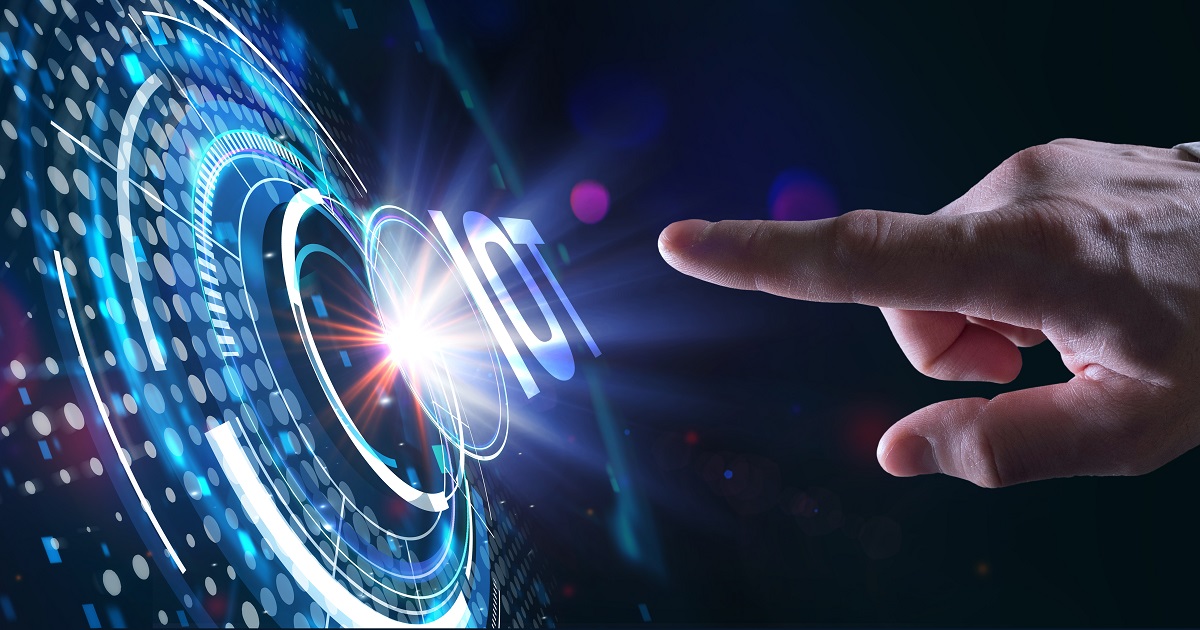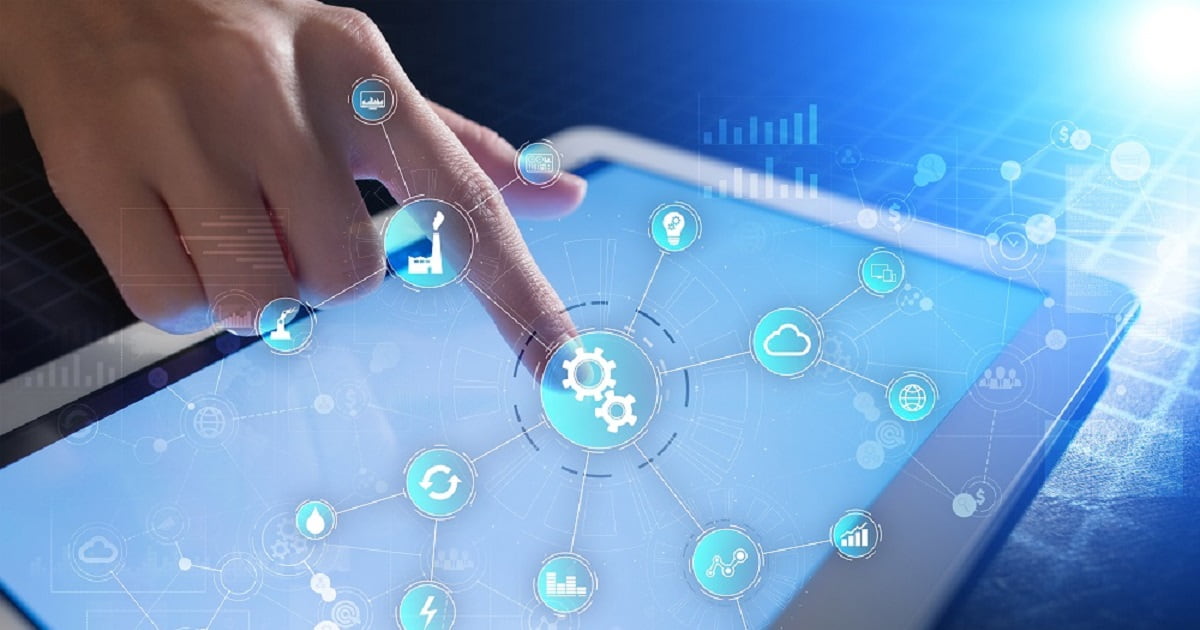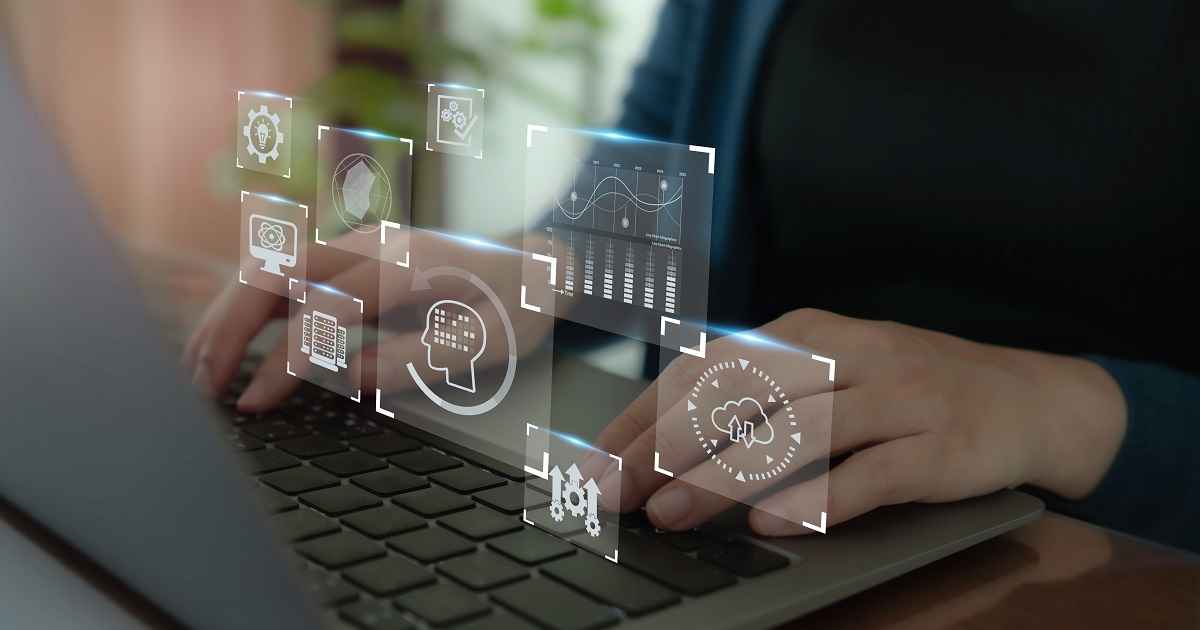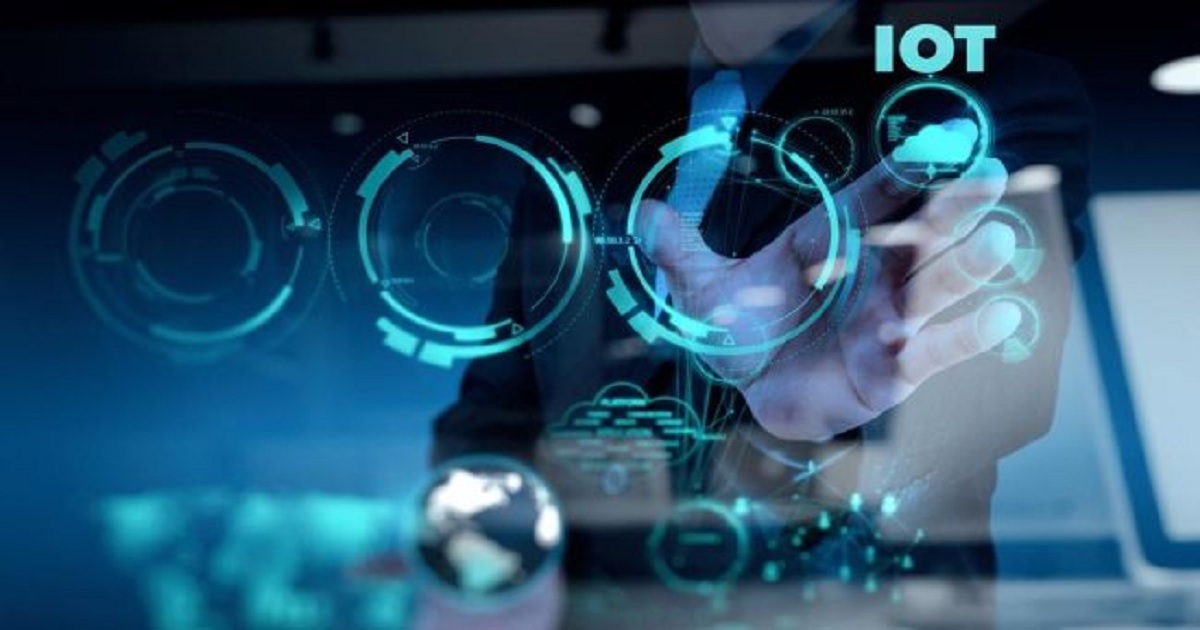
Enterprise Iot
Article | May 11, 2023
Explore the IoT tools for security and maintenance. These IoT monitoring tools addresses cyber security and privacy issues, catering to a various users including industrialists & individuals.
With the proliferation of interconnected devices in the Internet of Things ecosystem, ensuring robust security measures has become crucial to protect against cyber threats. The complexity and diversity of IoT systems pose unique challenges, making thorough security testing an essential practice. To address these challenges, various IoT development tools have emerged that enable organizations to assess and mitigate vulnerabilities in their IoT deployments. In this article, explore the top ten tools to secure IoT and IoT testing, equipping professionals and organizations with the means to identify and address potential security weaknesses, thus bolstering the overall security posture of their IoT infrastructure.
1. AWS IoT Device Defender
AWS IoT Device Defender is one of the security IoT management tools, designed to protect and manage IoT devices and fleets. Its auditing capabilities and continuous monitoring enable users to assess their IoT resources' security posture, identify vulnerabilities, and address potential gaps. By leveraging machine learning models or defining custom device behaviors, it can monitor and detect malicious activities, such as traffic from suspicious IP addresses or unusual connection attempts. The tool provides security alerts for failed audits or behavior anomalies, allowing users to mitigate potential risks quickly. Built-in actions facilitate security issue resolution, including device certificate updates, quarantine, and policy replacements. AWS IoT Device Defender offers automation for security assessments, identification of attack vectors, analysis of historical device behavior, and alarm notifications through various AWS interfaces.
2. Dynamic Application Security Testing
Appknox offers two robust mobile application security solutions: Automated Dynamic Application Security Testing (DAST) and Penetration Testing (PT). With Automated DAST, users can assess the security of their mobile apps in real time while running in their operational environment. The solution provides access to real devices, allowing users to replicate real-life interactions and identify security vulnerabilities. On the other hand, Appknox's Penetration Testing solution delivers reliable and thorough security assessments by expert security researchers. Users can request a manual pentest effortlessly, and the skilled team analyzes apps to identify and eliminate potential threats. The process includes identifying the tech stack, analyzing the threat landscape, setting up breakpoints, testing responses, detecting bugs, and performing advanced threat exploits.
3. Enterprise IoT Security
Enterprise IoT Security is a comprehensive Zero Trust solution designed to address IoT devices' security challenges in modern enterprises. It helps eliminate implicit trust and enforces zero-trust principles through least privilege access, continuous trust verification, and continuous security inspection. With this solution, organizations can quickly discover and assess every IoT device, easily segment and enforce the least privileged access, and protect against known and unknown threats. By simplifying operations, Enterprise IoT Security enables faster deployment, with a 15-time faster deployment than other solutions. The solution offers better and faster protection for IoT devices, delivering 70 times more security efficiency and 20 times speedier policy creation.
4. Azure Sphere
Azure Sphere is a secure IoT platform offered by Microsoft that allows businesses to create, connect, and maintain intelligent IoT devices. It provides end-to-end security, from the silicon level to the operating system (OS) to the cloud. With Azure Sphere, organizations can securely connect, manage, and protect existing and new IoT devices. The platform offers over-the-air updates, integration with IoT platform services, and continuous security improvements. It helps businesses deploy real-time security patches, maintain device operations, and accelerate time to market. Azure Sphere incorporates essential security properties and offers comprehensive security and compliance.
5. Microsoft Defender for IoT
Microsoft Defender for IoT is a comprehensive security solution that provides real-time asset discovery, vulnerability management, and threat protection for the Internet of Things and industrial infrastructure, including ICS/OT environments. It offers context-aware visibility into IoT and OT assets, enabling organizations to manage their security posture and reduce attack surfaces based on risk prioritization. With behavioral analytics, it detects and responds to attacks across IT and OT networks. Integrated with SIEM/SOAR and XDR tools, it delivers unified security and leverages threat intelligence for automatic response. Microsoft Defender for IoT is designed to meet the unique security needs of various industries and supports complete endpoint protection when combined with Defender for Endpoint.
6. IoT Security
Forescout offers an IoT security solution that automates security measures and provides visibility for every device connected to the network. Their zero-trust approach ensures complete device visibility, proactive network segmentation, and least-privilege access control for IoT, OT, IoMT, and IT devices. The platform classifies and monitors devices in real time, identifies weak credentials, and enforces strong passwords. It also enables dynamic network segmentation and automates zero trust policy orchestration across multi-vendor environments. Forescout's solution efficiently manages asset inventory and device lifecycle and has been proven to scale for enterprise-level deployments.
7. ThingSpace
The ThingSpace Platform for IoT offers a comprehensive set of iot tools and devices for developing and managing the lifecycle of IoT devices. It enables connectivity management at scale, allowing secure activation on the Verizon network and providing features to troubleshoot, locate, and manage IoT devices. Whether at the prototype stage or ready to scale for enterprise-level deployment, ThingSpace provides the necessary resources for IoT solution development and management. As a Magic Quadrant Leader for IoT Connectivity Services, ThingSpace offers solutions for software management, device readiness, and overall device lifecycle management. Businesses can collaborate with technology leaders through their Executive Briefing Program to achieve their specific goals and gain a competitive edge.
8. Verimatrix
The Verimatrix Secure Delivery Platform offers a unified user experience by combining cybersecurity and anti-piracy services into a comprehensive cloud ecosystem. It provides media companies, content owners, streaming providers, and broadcast operators with a single pane of glass experience for securing content, applications, and devices. Key offerings include Streamkeeper Multi-DRM for cloud-based digital rights management, Verimatrix App Shield for zero code hardening of mobile applications, Verimatrix Video Content Authority System (VCAS) for real-time monitoring, and Streamkeeper Counterspy for cybersecurity and anti-piracy solutions. The platform also facilitates partner integrations, enabling seamless onboarding and revenue preservation.
9. Trustwave
Trustwave's Managed IoT Security provides comprehensive solutions to secure the Internet of Things (IoT) and minimize the risk of compromise. With expertise from Trustwave SpiderLabs, it offers knowledge about network assets, identifies weaknesses in applications, servers, APIs, and cloud clusters, and enables secure IoT deployment with quick validation of fixes. This reduces the risk of compromised devices, which can lead to various threats, including DoS attacks, privacy violations, and data theft. Trustwave's services cater to IoT developers/manufacturers, offering product security reviews, testing, and incident readiness services. For IoT implementers, it provides managed security services and testing to safeguard deployments and associated data.
10. ARMIS Agentless Device Security Platform
The ARMIS Agentless Device Security Platform supports implementing the Critical Security Controls(CIS) framework. Developed by the Center for Internet Security (CIS), these controls are periodically updated by a global community of experts. ARMIS aligns with the CIS Controls and provides a comprehensive set of security controls to address the framework's requirements. The platform caters to enterprises of all sizes and offers different implementation groups based on risk profile and available resources. With ARMIS, organizations can enhance their cybersecurity posture and implement the CIS Controls effectively.
Final Thoughts
Security is a major concern in IoT tools and software due to the proliferation of connected devices, the diverse and complex nature of IoT ecosystems, the need to protect data privacy and confidentiality, the lack of standardization, the long lifecycles of devices, and the distributed and scalable nature of IoT deployments. Addressing these concerns is crucial to prevent unauthorized access, data breaches, and ensure the integrity and privacy of IoT data.
The IoT tools and technologies discussed in this article represent some of the top options for conducting comprehensive IoT security testing. By leveraging these tools, professionals and organizations can proactively identify and address vulnerabilities in their IoT systems, ensuring their data and devices' confidentiality, integrity, and availability. By incorporating these tools into their security practices, organizations can bolster their IoT security strategy and enhance their ability to protect against emerging threats in the dynamic IoT landscape.
Read More

IoT Security
Article | June 28, 2023
2022 looks bright for power optimization! The vibrant research and development in Internet of Things (IoT) is fueling the expansion of wireless monitoring solutions and enabling giant leaps in terms of low-power design. A longer lifetime for your batteries, and thus for your device, is a dream about to come true.
We have gathered some of the most notable power optimization trends that are getting us all excited for 2022…
5G, the next era of broadband cellular networks will offer improved power saving capabilities
The next wave of wider 5G cellular technology is designed to support various new highly challenging industrial use cases. These usually require increased hardware complexity and more processing, together with higher processing power. These requirements can raise power consumption quite significantly.
Smart power consumption and energy efficiency are thus becoming keys for the success of these applications and 5G technology.To that extent, 5G New Radio (NR) has progressed swiftly. The new 3GPP™ release is designed to significantly improve the performance, flexibility, scalability, and efficiency of current mobile networks. Improved power saving features now allow IoT developers to get the most out of the available battery capacity. This could make all the difference for new IoT use cases and efficiencies.
A new generation of sensors are optimized for low power technologies
New families of ‘breakthrough’ sensors, based on anultra-low power architectureare optimized for use in compact wireless devices. These sensors offer a richer set of functionalities and can be combined to create new insights (sensor fusion). One of the greatest challenges facing developers of these small form-devices is power consumption. Aware of these limitations, hardware manufacturers have been working hard to address them. Integrated circuit designs and techniques are now using less power while smart processing capabilities are enabling the sensors to intelligently manage sensing functionalities,delivering ultra-low power performance for best-in-class power consumption. The use of advanced Low Energy Bluetooth and wireless protocols (e.g. Bluetooth Low Energy (BLE) or ZigBee Green Power) also allows the transmission of data to the gateway more efficiently compared to prior solutions, opening new possibilities for developers.
Big Data, Analytics, Machine Learning and Edge computing are picking up the pace
The explosion in data volume and diversity is forcing organizations to rethink the way they process the information. Indeed, capturing, sending and processing the information in the cloud can be taxing for the network, the storage and the computing infrastructures which demands more processing power, hence the need to keep the transmission window as short as possible.
This has led to the development of advanced devices capable of collecting, processing and storing data autonomously before the data is sent to the servers. This concept is calledEdge computing. By reducing the need for data to be streamed through the networks, diminishing computing and processing costs,Edge computing contributes to optimizing power performance, whilst delivering quality data in a more sustainable way.
The rise of DevOps and new IoT Device Management platforms are contributing to better efficiency and better devices
The rise ofDevOpshas been swift. Derived from Development and Operations, ‘DevOps’ teams are responsible for making sure that the infrastructure is being maintained properly.With the help of IoT Device Management platforms—which are a central part of today’s IoT ecosystems— DevOps teams can better manage, scale and operate their fleet of devices remotely and reduce long-term operational costs.One of the areas that benefits from the rise of DevOps implementation is power supply optimization, as more efficient protocols such as Lightweight Machine to Machine (LwM2M) allow for device and battery monitoring, remote device actions and faster communication.
Harvesting technologies are becoming more effective
Power harvesting technologies include processes where energy from ambient sources such as the sun, temperature, movement or wind, is captured and stored to power wireless autonomous devices. Now gaining experience,harvesting technologies can exploit natural resources better than ever before.
As a result,the gap between the power requirements of embedded systems and the energy generated by energy harvesting systems is finally closing. Industrial applications for these technologies are still very limited, but coupled to efficient rechargeable batteries, they can present new opportunities for devices deployed in wild remote areas.
Power optimization tools are becoming increasingly exhaustive and reliable
Battery optimization is everyone's business and needs to be considered throughout the overall system performance analysis, from prototyping to deployment and on toward maintenance cycles.
Several innovating tools haveappeared on the market over the past few years and developers have now access toa rich ecosystem of tools to analyze their overall system performance.
Wisebatt for Saft for example can help creating a virtual prototype and simulate its consumption.Deutsche Telekom’s IoT Solution Optimizergoes even further. You can model the complete system to identify potential energy consumption issues or leaks. The system can not only recommend the right combination of power saving features based on your use case, but also can help you visualize how communication payload size, protocol use and communication frequency impact your battery life.
When at the prototype stage,Qoitec Otii solution measures in real time the consumption of your device at various temperatures, up to the measurement of the firmware and hardware operations without the need for expensive testing. These tools are constantly enhanced and improved to deliver better analysis and more accurate data.
With an increased awareness from IoT developers of the stakes of power consumption and the growing rate of low-power innovations, batteries are now able to outlive the devices they’re in. This opens the doors tomany new markets and applications and above all to more sustainable consumption patterns. When we told you the future looks bright, we weren’t joking!
Read More

Enterprise Iot
Article | July 20, 2023
Explore the emerging complexities of IoT data governance with 7 key challenges to tackle. Address data privacy, security, and ethical concerns, empowering your business for success in 2023 and beyond.
Contents
1 The Case for Maintaining IoT Data Governance
2 Challenges of IoT Data Governance
2.1 Lack of Organizational Commitment
2.2 Data Privacy Concerns
2.3 Lack of Endpoint Security for IoT Devices
2.4 Issues with IoT Device Authentication
2.5 Increasing Volume of Unstructured Data
2.6 Unethical Use of IoT Data
2.7 Inadequate Data Governance Protocols
3 Addressing IoT Data Governance Challenges
3.1 Security by Design
3.2 Awareness Initiatives
3.3 Standardized Data Governance Policies
4 Conclusion
1 The Case for Maintaining IoT Data Governance
The growing use of IoT devices across various industries has caused a surge in data volume. Most of these devices store sensitive company data, which plays a crucial role in business operations but can have dire consequences if it falls into the wrong hands. Thus, companies need to understand what is IoT governance and its implementation to safeguard sensitive data from unauthorized access and malicious exploitation.
2 Top Challenges in IoT Data Governance for Businesses
2.1 Lack of Organizational Commitment
Organizational commitment is essential for effective IoT data governance. There needs to be a clear purpose and goals regarding data governance that are communicated to all stakeholders. Not focusing on organizational commitment can result in a lack of alignment between the organization's goals and the IoT data governance strategy, as well as uncertainty about ownership and accountability for data governance across the organization.
2.2 Data Privacy Concerns
Ensuring data privacy is a significant concern when implementing IoT data management to maintain IoT data governance security. With the vast amount of data generated by IoT devices, there is an increased risk of personal and sensitive data being compromised. Therefore, it is crucial to identify potential vulnerabilities, mitigate the risk of data privacy breaches in IoT environments, and anonymize user data for consumer devices.
2.3 Lack of Endpoint Security for IoT Devices
IoT devices are often designed with limited processing power and memory, and as such, many connected devices do not have built-in security features. This makes them attractive targets for hackers seeking to access confidential data or disrupt operations. Without proper endpoint security measures, IoT devices can be compromised, leading to data breaches, network downtime, and other security incidents that can compromise the entire system's integrity.
2.4 Issues with IoT Device Authentication
When IoT devices are designed without proper authentication mechanisms, it can be challenging to verify their identities. This results in possible unauthorized access, data breaches, and other security incidents. To supplement IoT data management practices, companies must implement secure authentication protocols specifically designed for IoT environments, such as device certificates, digital signatures, and multi-factor authentication, to maintain IoT data governance.
2.5 Increasing Volume of Unstructured Data
IoT devices generate vast amounts of data in various formats and structures, including text, images, audio, and video, which can be difficult to process, manage, and analyze. This data is often stored in different locations and formats, making it challenging to ensure quality and consistency. Moreover, this flood of unstructured data can contain sensitive information that must be protected to comply with regulations and standards. For effective IoT data governance, it is necessary to implement data classification, metadata management, and data quality management to make sense of unstructured data.
2.6 Unethical Use of IoT Data
IoT devices collect data that can be sensitive and personal, and misuse can lead to various negative consequences. Data from IoT devices can be used to develop insights, but it must be handled carefully to avoid privacy violations, discrimination, or other negative consequences. Ensuring data ethics requires organizations to consider the potential impacts of their data collection and use practices on various stakeholders. This involves addressing issues such as data privacy, data ownership, transparency, and bias in IoT data analytics.
2.7 Inadequate Data Governance Protocols
Without proper data governance protocols, IoT data may be inaccurate, incomplete, or difficult to access or analyze, reducing the effectiveness of IoT systems and limiting the potential benefits they can provide. Additionally, inadequate data governance protocols can lead to security and privacy vulnerabilities, potentially exposing sensitive data to unauthorized access or theft. This can result in legal and regulatory penalties, reputational damage, and a loss of customer trust.
3 Addressing IoT Data Governance Challenges
3.1 Security by Design
This approach involves integrating security and governance considerations into the design and development of IoT systems from the outset. This helps minimize vulnerabilities, prevent breaches that may compromise the confidentiality, integrity, and availability of IoT data, and help maintain IoT data governance. In addition, by prioritizing security in the design phase, organizations can implement security controls and features tailored to their IoT systems' specific needs, which can help prevent unauthorized access, manipulation, or theft of IoT data.
3.2 Awareness Initiatives
IoT data governance challenges can arise due to an improperly trained workforce that may not recognize the purpose and benefits of data governance practices. Awareness initiatives can help organizations develop a culture of security and privacy. These initiatives can educate employees and stakeholders about the risks and best practices associated with IoT data governance, including the importance of data security, privacy, and ethical considerations. By raising awareness of these issues, organizations can promote a culture of responsible data management, encourage stakeholders to adhere to data governance policies and procedures, and reduce the risk of human error or intentional misconduct that could compromise IoT data.
3.3 Standardized Data Governance Policies
Collaboration between local, regional, and federal governments and businesses is essential to establishing frameworks for implementing IoT and related technologies within their jurisdictions. Cooperation between governments and enterprises is crucial for implementing a standardized IoT data governance policy. This will protect end-users by mandating basic standards in procurement processes and creating regulations and guidelines that promote responsible data governance.
4 IoT Data Governance: Future Outlook
Data is one of the most valuable resources for organizations today, and addressing the problem of IoT data governance will ensure that the IoT of enterprises is used effectively and responsibly. Straits Research reported that the worldwide data governance market had a worth of USD 2.1 billion in 2021 and is projected to reach an estimated USD 11.68 billion by 2030. IoT devices are a key driving factor behind the growth of the data governance market, and as the amount of data generated and the number of devices grows, so will the complexity of data governance. By maintaining strong data governance policies and tracking changes in policies and best practices, businesses can ensure compliance and maintain trust in the long run.
Read More

Article | April 15, 2020
Three out of four IoT projects are considered a failure, according to Cisco. This is troubling but even more so when Cisco also found 61 per cent of companies say they believe they’ve barely begun to scratch the surface of IoT can do for their business? Businesses believe in the long-term value offered by integrating IoT into their business plan, however, they lack the knowledge of what is required to ensure the success of such a complex project. By studying past failed projects, technology leaders can gain a better understanding of why they failed and what they can do differently when evaluating and undertaking new IoT initiatives.
Read More